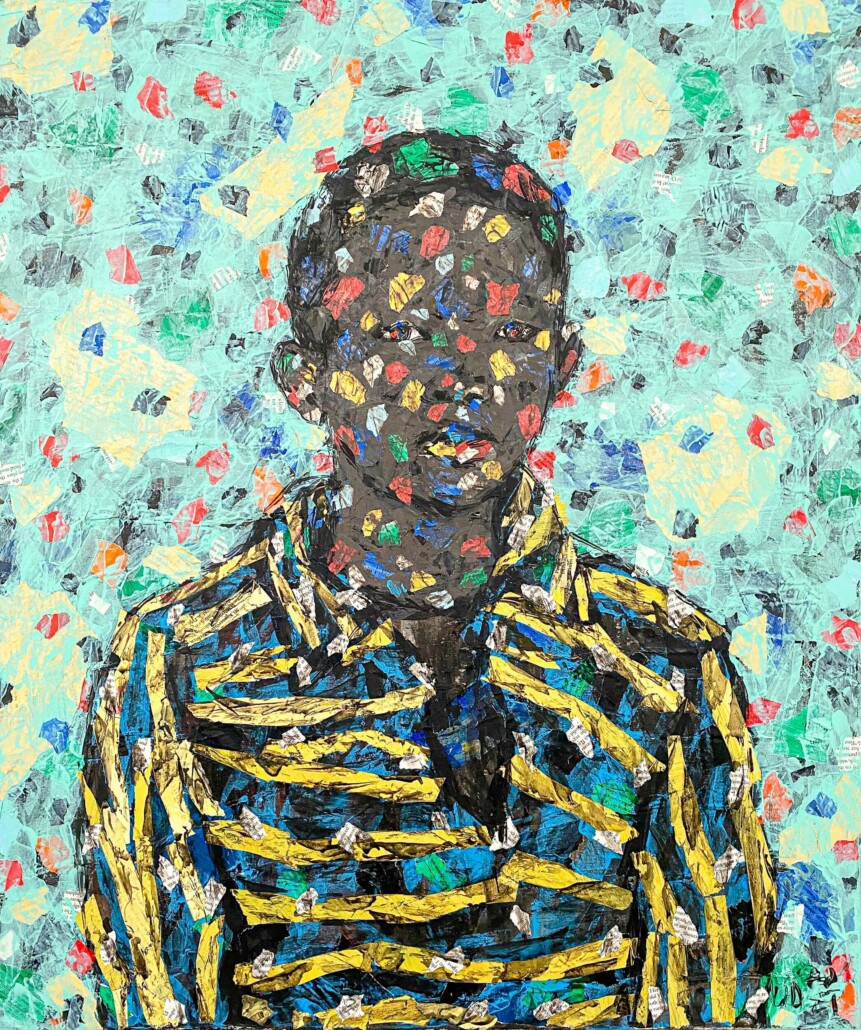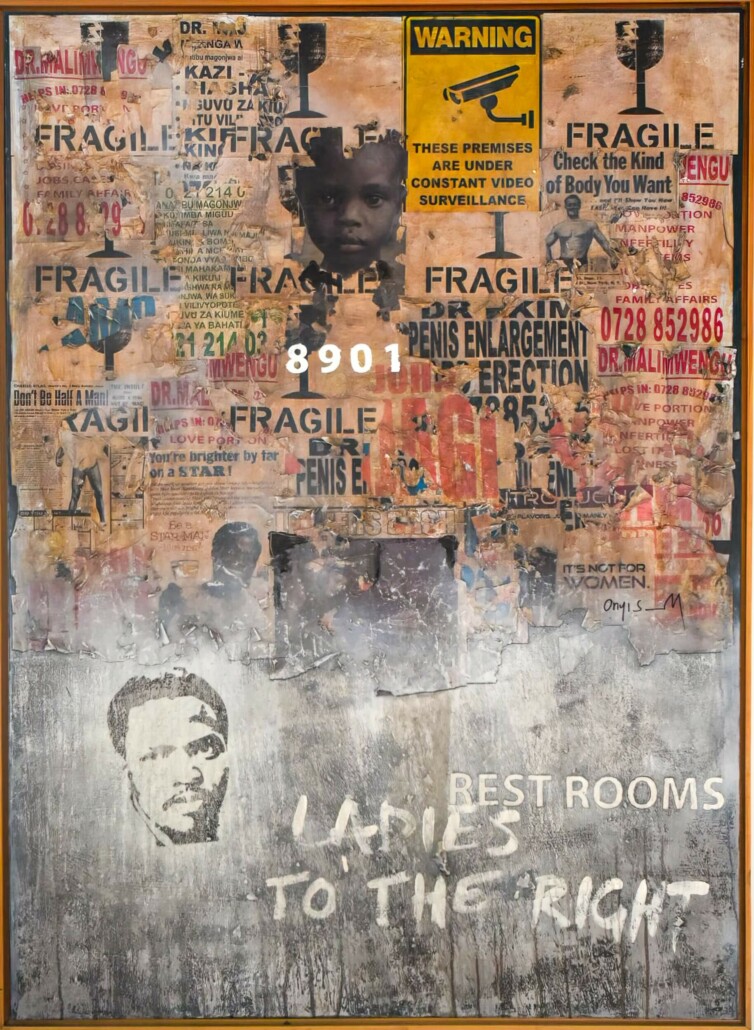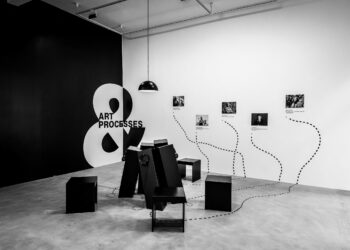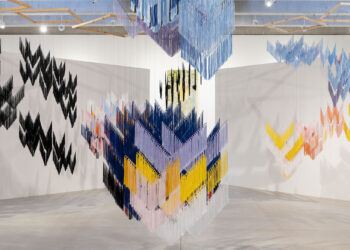OOA Gallery presents the duo show ‘All men are born equal’ with recent artwork by Nigerian artist Emeka Udemba and Kenyan artist Onyis Martin

Emeka Udemba, Series As We Are Nr1, 2021. Mixed media on canvas, 70 x 60cm. Courtesy of the artists & OOA Gallery
President Joe Biden pledged to Black America that he will mandate and deliver on social and economic equality and justice. As equity does not yet exist in American society, the Biden administration promised to impose it.
And why not?
If all men (and women) are created equal, the most reasonable explanation for the rampant inequality of wealth, privilege and opportunities between men and women, and Black, Brown and White Americans, is that the game has been rigged. The disparity in inequality exists because “systematic and structural racism” coexists in American society imbued by “white privilege.”
Emeka Udemba started making his signature style portrait paintings with added elements of colourful and transparent collage. Appropriating anonymous images of refugees and impoverished people found on the Internet, Udemba gives prominence to these subjects by portraying their inner beauty while surrounding them with swirls of coloured papers and mediated information that’s usually used to define them. “I want the viewer to see the information swirling around us so that they can understand how it impacts the way we define other people,” says Emeka Udemba.
Realism is secondary in his constructions. His work is more investigative; it’s more about the questioning of identity. He’s creating a psychological situation, in which fragments are consciously placed, particularly around mouths and ears – as though he’s exclaiming that much is being said and heard on a daily basis, but that you have to discern what is meaningful. “My figures are in a space that has no demarcation. They have all of these pieces of paper with information floating around them. It’s a space for speculation. It’s full of ideas that can be seized. The figures are free to think what they want to think. They inhabit spaces that have little or no constraint”, adds Emeka Udemba.
Beyond the humanist ideology conveyed in the work, Udemba’s paintings are also fascinating in the highly inventive way in which they are made. The artist begins each painting by covering the canvas with layers of newsprint to give it texture, but instead of applying the paint with brushes he uses pieces of recycled plastic that he cuts to size to make a desired mark. A thin piece of plastic is used to outline the figures, while larger bits of plastic are used like a palette knife to lay down bands of transparent colour. Once the figures are set on the canvas, he covers them with thin pieces of coloured paper and slices of random texts culled from newspapers, brochures and advertisements that he picks up during his travels.
Veiled in a blizzard of information, his people are nearly invisible, which is the plight of the immigrant, who can seem invisible to some even as they try to sometimes make themselves invisible to all in order to avoid trouble.

Onyis Martin, Ladies are always right, 2020. Mixed media on canvas, 154 x 112cm. Courtesy of the artist & OOA Gallery.
Taking from the Talking Walls Series, Onyis Martin’s body of works looks deeply on to what is written on the streets wall to, seaving majorly on the words of resistance to better understand what the society is rebelling or reflecting in these times. Martin adds: “The series is majorly looking into how the signs and posters continue to divide us in the modern and contemporary world today, with some posters technically limiting accessibility of spaces like it was done before in terms of class, race and gender, while the statements come in to resist these restrictions.”
The statements are a collection from the streets, each painting given a number to personify it, making it become both the artist reflecting his time and the artwork at the same time. The metaphor of the wall always being the boundary which we have to choose whether we want to pass to the other side, stand in front or just take notice that there’s always a wall.
The works Onyis Martin presents are large canvases onto which several materials and media are glued, giving the work a very characteristic aspect of old walls of posters. They appear, in a palette that is dominated by blue/green and black/brown, as a pile of torn paper, of traces, of diverse colours, of figures and writings painted by the artist that settle on the background.
Experimenting with a wide range of materials, Martin explores the human condition and the global geopolitical interface, specifically through issues surrounding human trafficking, migration, corruption, and displacement. Additionally, he explores matters surrounding communication, the rapidly changing technological environment, and the consumerism that surrounds it.
Using his personal experience as a point of departure, he interweaves individual and collective experiences highlighting the varying yet similar experiences people have in different places globally. In his most recent group of works, Martin extended his exploration of how information depends on and is influenced by freedom and social structure towards investigating the rise of consumerism.
Deeply connected to contemporary urban society, Martin’s paintings explore, portray and reflect on current issues affecting not only the African continent but the world as a whole. Delving into global concerns such as human trafficking, migration, political and institutional corruption, repressive environments, and displacement, Martin’s works also explore issues of freedom, communication, rapidly evolving technological information and consumerism.
The exhibition will be on view from the 15th of September until the 23rd of October 2022. For more information, please visit Out Of Africa Contemporary Art.



